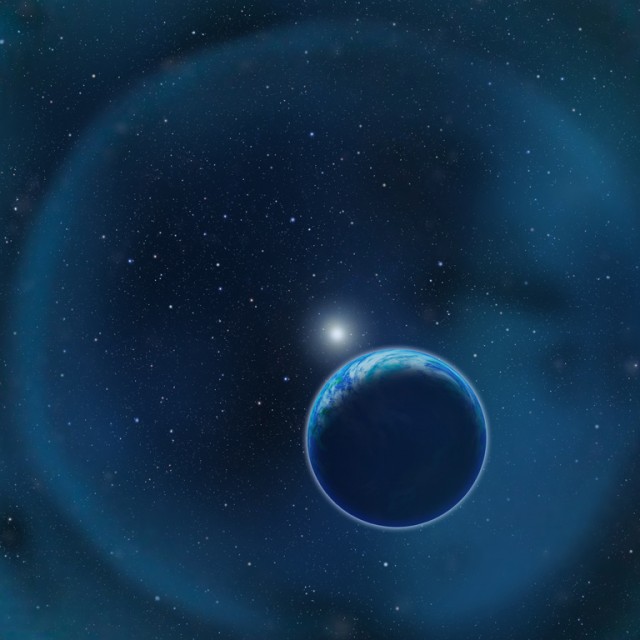
Artist's impression of an Earthlike planet orbiting around a white dwarf: the remains of a star like our Sun that has shed most of its mass.
One possible resolution: look for exoplanets orbiting white dwarfs, the remnants of stars like our Sun. The advantages of these systems would be manifold: a white dwarf is much smaller than a star, so if a planet passes between it and us, far more light is blocked. And Avi Loeb and Dan Maoz proposed that at least some signs of life might have survived the deaths of these stars. The light emitted by the white dwarf could highlight any oxygen in the exoplanet's atmosphere, which would be seen as a strong hint of life.
Individual living organisms, or even massive populations like forests and cities, will remain too small to see for the foreseeable future. However, life as we know it leaves chemical evidence. The signatures of some of these chemicals, like chlorophyll (used by plants and some bacteria in photosynthesis), are obvious; others, like methane, can be either biological or non-biological in origin.



No comments:
Post a Comment